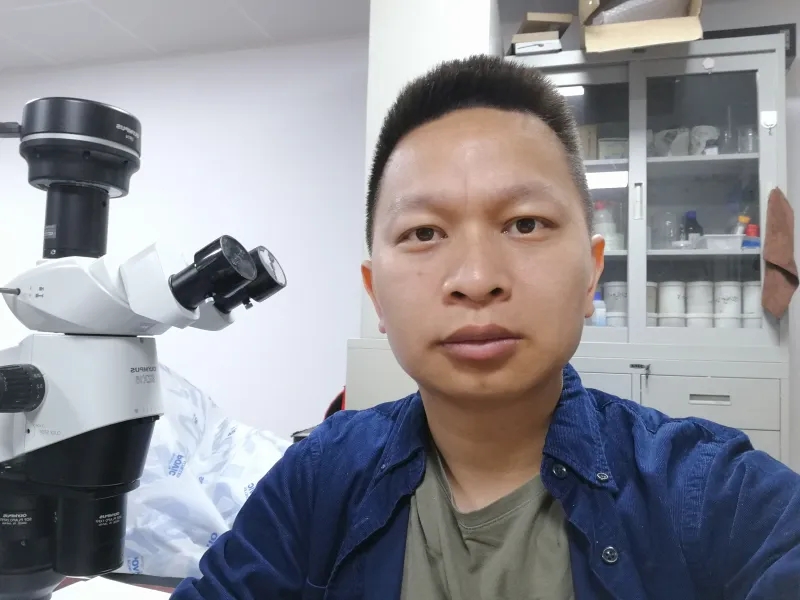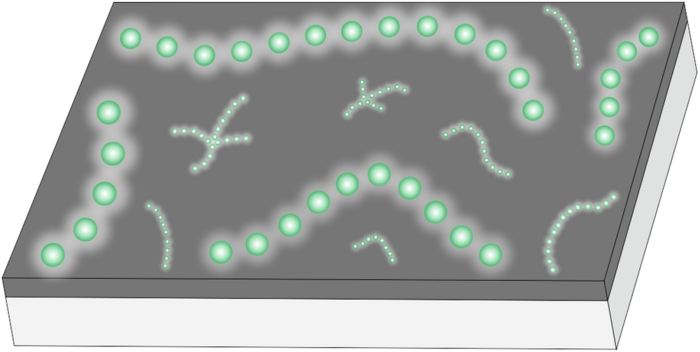The enigmatic Proterozoic macrofossil genus Horodyskia, characterized by strings of bead-like structures, offers vital insights into early eukaryotic evolution. Despite its global distribution and fossil records extending from the early Mesoproterozoic Era (~1.48 Ga) to the terminal Ediacaran Period (~550 Ma), Horodyskia’s biological affinity is debated, with theories ranging from brown alga to green alga.
A recent study by Li Guangjin et al. examined new Horodyskia specimens from the Tonian Period (~850-720 Ma) found in North China and have allowed for in-depth analysis using advanced techniques like light microscopy, SEM, and Raman spectroscopy. These specimens displayed diverse preservational styles, including carbonaceous compressions, 3D preserved organic-walled fossils, shallow impressions, and molds, offering invaluable phylogenetic insights.
The findings link the Mesoproterozoic Horodyskia moniliformis with Ediacaran Horodyskia minor specimens, reinforcing their biogenicity and suggesting they represent a colonial giant-celled protist, possibly a coenocytic alga. This reveals an ancient and stable macrofossil taxon and shows coenocytic and colonial body plans dating back at least 1.48 billion years.
PANG Ke set aside some time to discuss the group’s findings with SCINQ.

Horodyskia has been described as an extremely old multicellular macroorganism. Could you explain to us in simple terms what makes Horodyskia so unique and why it has garnered so much scientific interest?
Horodyskia is unique because of its mysterious “string of beads” body construction, which has not been found in extant macro-organisms or extinct macroscopic species. Some microbes present their cells in a similar manner via a common sheath or extracellular gelatinous matrix, but they are much smaller in size. Horodyskia is a fossil taxon of intense scientific interest because it is one of the oldest macroscopic fossils visible to the naked eye, with its earliest occurrence in the Mesoproterozoic (~1.48 Ga). If the biogenicity and eukaryotic nature of Horodyskia are proven, it will greatly help us to understand the tempos and modes of early eukaryotes, particularly in terms of how and when early eukaryotes developed complex multicellular grades of organization and acquired macroscopic body sizes.
Your research suggests that Horodyskia might have grown to its macroscopic size through a mix of coenocytism and simple clonal coloniality. Could you break down what these two concepts mean and how they might have contributed to the organism’s growth?
“Coenocytism” means that each bead of Horodyskia, although representing just one cell, possesses multiple nuclei inside its protoplasm; “simple clonal coloniality” means that all the beads/cells of a string come from a common mother cell by dividing, and they are not disassembled, but form a simple and not fully integrated string/colony after dividing. Therefore, “coenocytism” helps each bead/cell to become extremely larger in size because there are many nuclei inside that can regulate the giant mass of protoplasm (growth for individual bead/cell), whereas “simple clonal coloniality” helps each string/colony to become longer because there are halos/extracellular gelatinous matrix which envelop all the beads/cells and keep them in the manner of a string after dividing (growth for the whole string/colony).
In terms of preservation, Horodyskia specimens have been previously found in cast-and-mold form within fine-grained siliciclastic rocks or cherts. In your new findings, however, there are multiple preservational styles. Could you explain these differences and why they’re significant?
The most important preservational styles in our findings include carbonaceous compression and three-dimensional organic walls. These kinds of preservational styles are different from those previously reported in that there are organic films/walls preserved. These organic films/walls, similar to those of co-existing macroalgal fossils, provide convincing evidence for the biogenicity of Horodyskia.

Your research also disputes the possibility of these specimens being sedimentary structures, mud flocs, or intraclasts. What evidence supports this and why is this important to the study of Horodyskia?
It is important to exclude the possibility of sedimentary structures before we can discuss the evolutionary significance of Horodyskia or any other Precambrian fossils. Apart from the preservation of organic films/walls, evidence supporting our conclusion includes the consistent morphology, bead size distribution, and bead spacing of Horodyskia. The bimodal size distribution with a narrow average/standard deviation ratio for the beads of Horodyskia is a characteristic of biogenic organisms, rather than sedimentary structures, mud flocs, or intraclasts.
You mention two distinct groups of fossils with different bead sizes found on the same bedding plane. Could you talk about why this matters and how it supports the assignment of specimens with submillimetric beads to the genus Horodyskia?
Horodyskia preserved in Mesoproterozoic rocks (1.6-1.0 Ga) usually have millimetric beads. Later, people also assigned specimens with submillimetric beads from the late Ediacaran Period (~550 Ma), which are much younger in age, smaller in size, and different in preservational style, to the genus of Horodyskia. This taxonomic assignment has been a topic of long debate. We found two groups of fossils with distinct bead sizes on the same bedding plane in the North China material. These two groups of specimens have the same preservational style, exhibit similar positive correlations between bead diameter and spacing, and share a largely overlapping chemospace distribution, suggesting that they are congeneric organisms belonging to the same genus—Horodyskia. Particularly, the ranges of their bead diameters overlap with that of Horodyskia minor (submillimetric beads) from the Ediacaran Period and that of Horodyskia moniliformis (millimetric beads) from the Mesoproterozoic, respectively. Therefore, our study supports the assignment of specimens with submillimetric beads, including those from the Ediacaran Period, to the genus Horodyskia.
The large cell size of Horodyskia indicates it’s likely a multinucleated or coenocytic eukaryote. For those of us who aren’t experts, could you explain what this means and why it’s a significant finding?
Because the cell size of Horodyskia is orders of magnitude larger than typical prokaryotic cells, including the largest prokaryotes such as the sulfur-oxidizing bacterium Thiomargarita, we interpret it as a eukaryote. But such a large size is even unusual for a eukaryote. In extant eukaryotes, a millimetric cell usually is multinucleated or coenocytic. Because the cell is too large, a single nucleus, which can only control a limited volume of the protoplasm, cannot fully control the whole protoplasm. Therefore, we infer that there must be a number of nuclei inside the beads/cells of Horodyskia, making it a multinucleated or coenocytic eukaryote.
Finally, your research proposes that Horodyskia is a multicellular, giant-celled protist, which provides important temporal constraints on the origin of coenocytic eukaryotes. Could you explain the implications of this finding, both for our understanding of Horodyskia and for our broader understanding of the evolution of eukaryotes?
The direct implication of this finding is that it proves the biogenicity and multicellular and eukaryotic nature of Horodyskia, making this taxon among the oldest bona fide macroscopic organisms. Scientists have inferred that early eukaryotes may have achieved a macroscopic size through multicellularity. Horodyskia does present multicellularity via simple clonal coloniality. On the other hand, the individual beads/cells of Horodyskia are also visible to our naked eyes. This is achieved by another way—possessing multiple nuclei in each bead/cell, i.e., coenocytism. This is a new understanding about early eukaryotes. We now know that early eukaryotes can acquire a large body size through the combination of coenocytism and simple clonal coloniality. They utilized both pathways simultaneously.
IMAGE CREDIT: Daderot.
Download:
